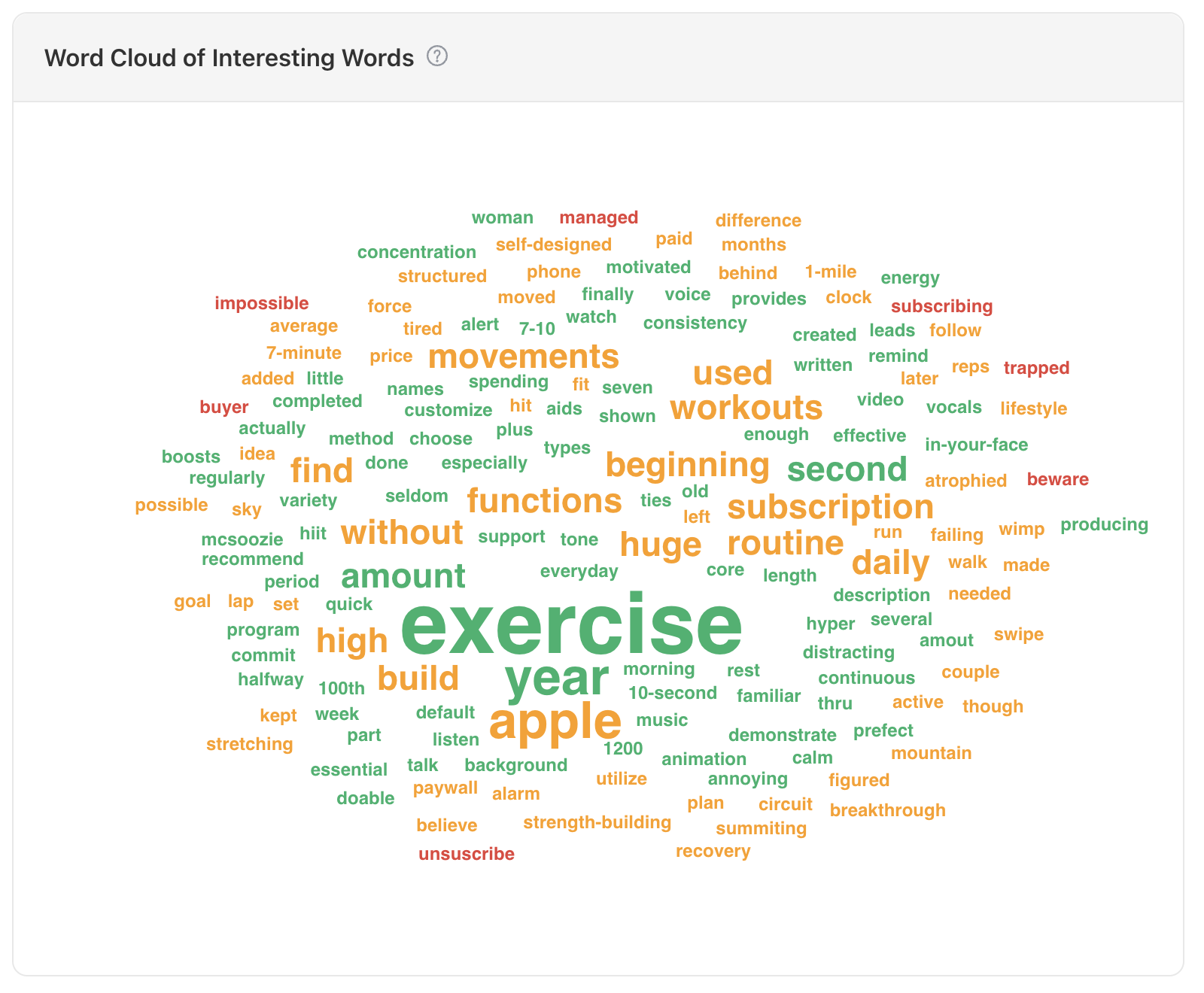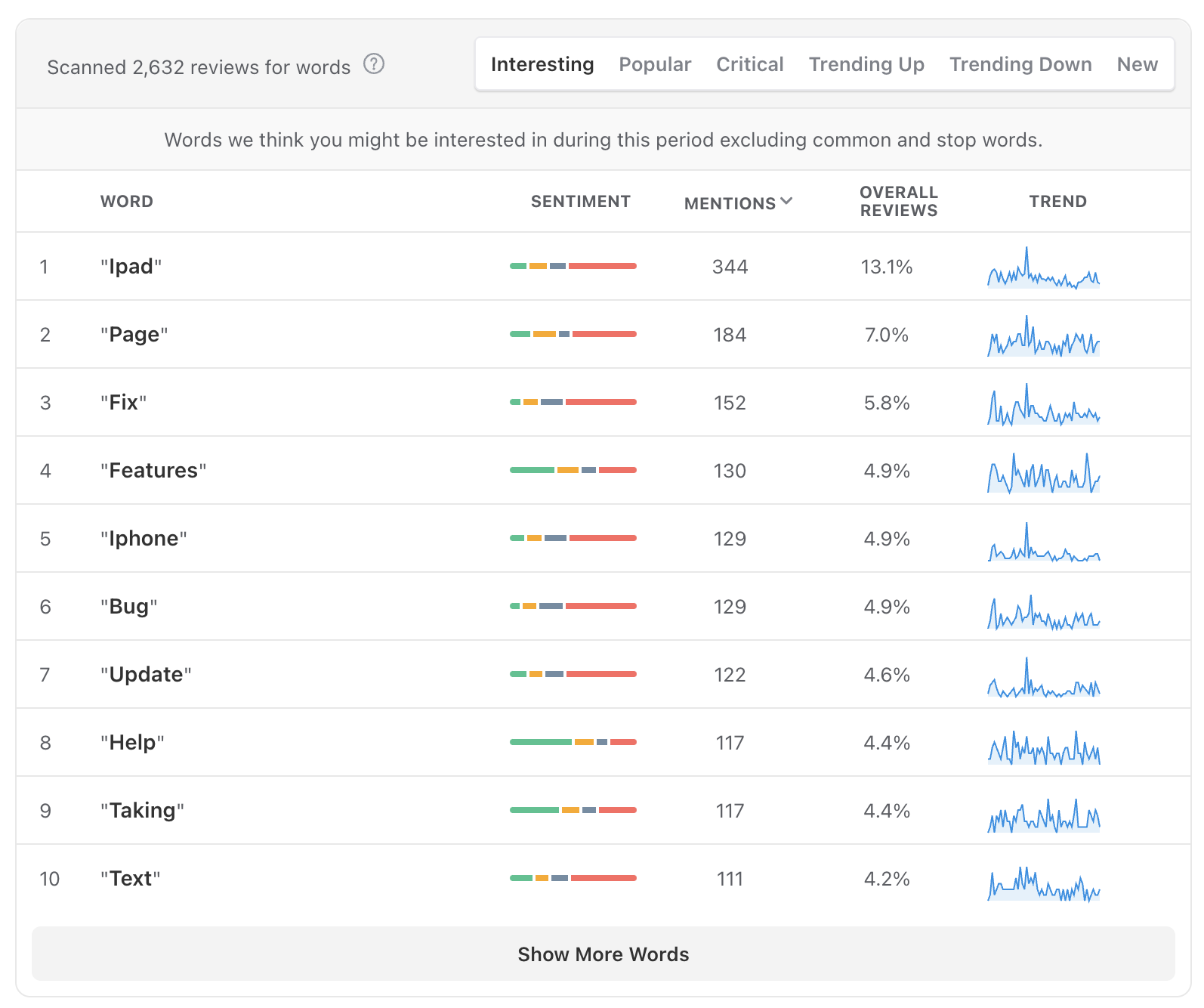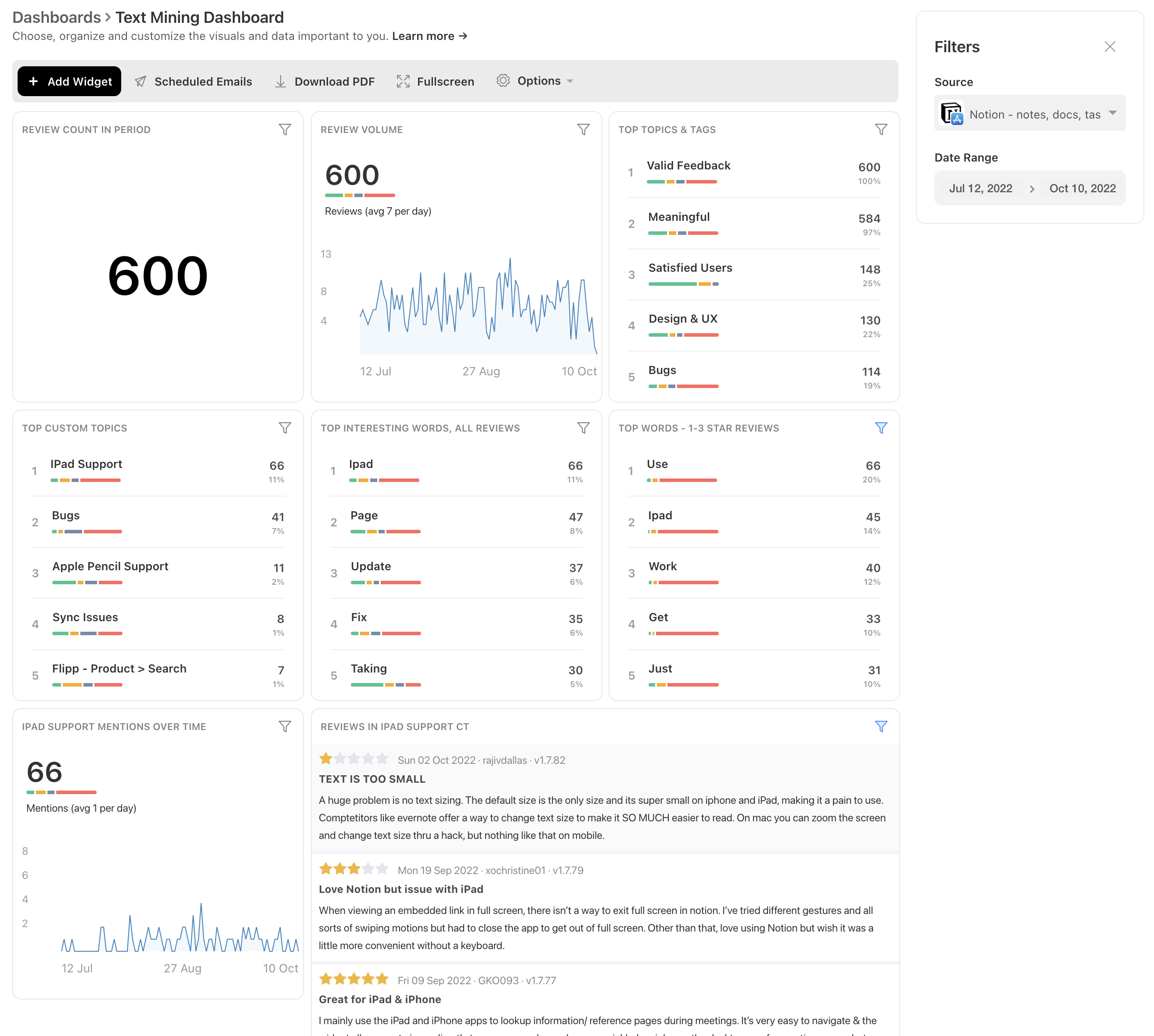Want to get your app into the top charts? There are lots of techniques you can use to drive higher downloads, revenue and rankings in the app stores.
In our experience, with our own apps, one of the most valuable tools at your disposal is the feedback customers have already given you in your app reviews. Text mining is a technique designed to help you understand the most common themes in your app reviews without having to read each review individually. It can save you dozens of hours per week if your app is already fortunate enough to be getting hundreds or even thousands of reviews per day.
Definition of text mining
Text mining, also referred to as text data mining, similar to text analytics, is the process of deriving high-quality information from text. In “What is Text Mining?” by Marti Hearst, text mining is described as “the discovery by computer of new, previously unknown information, by automatically extracting information from different written resources.”
Text mining is sometimes also referred to as text analysis or text analytics. You may also see these terms used somewhat interchangeably with the term “natural language processing”, or “NLP”.
Why use a text analytics tool for app reviews?
There are a number of benefits to using software to perform text mining of app reviews, over having humans read and manually categorize them. Text analysis software is now favored by many of the world’s most successful apps as a means to understand app review content, sometimes entirely replacing manual classification.
Some of the top benefits our customers report from using Appbot for text analysis, compared with using humans to manually group the reviews, are:
- Improved accuracy. This derives, at least partially, from the objectivity inherent in using software. Humans beings use a complex array of subjective criteria to analyze text, and each human’s subjective analysis can yield a different result. We each have various conscious and unconscious biases that affect our interpretation of what we read, but a piece of software uses an algorithm that yields a consistent result each time.
- Save time. Humans are slow (and therefore expensive!) at decision making. Text mining tools like Appbot can process thousands of reviews in a few minutes.
- Scales easily. NLP software can just as readily be applied to a handful of reviews, as to a database of tens or even hundreds of thousands of reviews. This avoids the need to hire as the volume of your app reviews grows, and also negates the time it takes to train those hires.
- Near-real-time results. The incredible speed and 24/7/365 availability of text analysis software means that you can see your app reviews analyzed in near real-time. No more waiting til the end of a reporting period to see results, or waiting for your data science team to have resources available to run the analysis.
What type of output should I expect from my NLP software?
There are many different tools out there for text mining. Each takes a nuanced approach to both the analysis and the visualization of the data. At Appbot, we developed tools to help us understand our app reviews specifically, leveraging our deep understanding of the idiosyncrasies of the language used in app reviews. We automatically classify reviews based on:
- the Words in the reviews.
- common Phrases (2, 3 and 4-word phrases) that appear
- the most popular Topics, based on an analysis of over 400 million app reviews, and
- Custom Topics, which are defined by the user and can be as broad or specific as you wish.
Different teams have different needs when it comes to presenting the data. In general, our experience suggests that many teams benefit from some level of graphic visualization. AT one end of the spectrum there are techniques such as word clouds which can be useful to give a general sense of the relative importance of different words:
Others prefer a tabulated view, where the relative differences between word can be more easily digested:
Alternatively, look for a text mining tool that allows you to build your own custom dashboards:
Choosing a text mining tool
When selecting software for text analysis of your app reviews, consider the following:
- Ease of configuration: some tools, like Appbot, take minutes to hours to set up, depending on how complex your use case is. Others require days or weeks, and may require a consultant or customer success manager from the vendor to assist you. The approach that works for you will depend on your use case and your team.
- Cost and commitment: pricing varies enormously in the NLP space. Again, whether a multi-year license purchase or a month-to-month SaaS subscription suits you best will depend on your company and team.
- Lastly, but probably most importantly: are the reports what you’re looking for? Do they cover all the relevant KPIs? Can stakeholders read them easily? How shareable is the information?
If you need any further assistance understanding text mining for app reviews, don’t hesitate to contact us with any questions or check out our FAQ section here.


